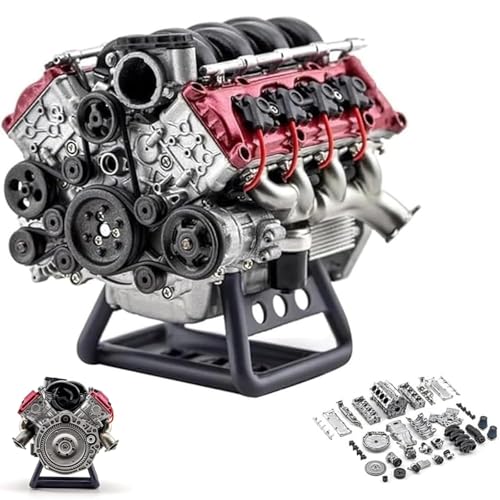Pete has the answer. Take heed. Surface finish is really like the cutting edge of a Hacksaw blade. For a bearing, you need to Linish the sharp peaks to microscopically flat surfaces and fine grooves (machined surfaces would destroy a plain bearing in NO_TIME!). So, with the shaft 0.001inch large, you need to smooth-off the surface peaks of the machining - Try a locking wrench (Mole grips) to LIGHTLY grip a piece of 400-grade emery on the freshly machined journal and after only maybe 5 or 10 slow rotations re-measure the journal to see how much it has changed the diameter. You need to be working to TENTHS of a thou, measuring with good calibrated micrometer, etc. as explained above.
LINISHING is for removing ONLY the peaks from the machining (so fine you may not really see them). NOT for removing metal to CHANGE SIZES. I used calibrated micrometers with a vernier scale on the barrel when I was and apprentice. And got a few things wrong before I got them right! I learned NOT to trust the scale of measurement for making cuts, but the MICROMETER for measuring the part after machining. If I want a 1 inch length at "size" I cut 1/10th inch and measure, then wave everything around and measure, and take the best and worst of 3 measurements as a guide, and make sure I am OK before making the full 1 inch length of cut.. Then check both ends of the 1inhch long cut and the middle, rotate 90 degrees and measure again, and rotate 90 degrees more and measure. Then I am sure of "size". stop at 0.001 in before "size" and linish the last thou. (You can't linish more than a thou on diameter - but you can Bodge the part out of true with coarse emery!).Checking fit with the bearing, as it may not be perfect! Don't use 2 Mics. They are NOT the same. at sub 0.001in. (unless in a calibrated measurement room and checked and set to be the same!). Use one, and measure internal sizes by using a comparator as above, then measure the comparator. I sue Drills and milling tools (the precision ground shanks) and Ball bearings (new, not worn) to confirm sizes of the micrometer, so I can check my technique is good. Calibrate YOURSELF: Measure something - precisely and carefully, Put down the tools. wave you hands around, and turn around, or walk around the workshop. Measure again. Repeat 10 times and do some statistics on your results. EXPECT them to vary by as much as 1 or 2 thou. - That is NORMAL AND HUMAN. But with practice, you can improve... and record the improvement. Do that daily for a week, and see what happens? DO NOT Kid yourself: Expect variation and you will find it. Expect perfection and you will find it - when it is not there... - and find that things don't fit when expected. We've all been there, or not made precision stuff. So this is just a part of improving your expertise.
Enjoy!
K2
LINISHING is for removing ONLY the peaks from the machining (so fine you may not really see them). NOT for removing metal to CHANGE SIZES. I used calibrated micrometers with a vernier scale on the barrel when I was and apprentice. And got a few things wrong before I got them right! I learned NOT to trust the scale of measurement for making cuts, but the MICROMETER for measuring the part after machining. If I want a 1 inch length at "size" I cut 1/10th inch and measure, then wave everything around and measure, and take the best and worst of 3 measurements as a guide, and make sure I am OK before making the full 1 inch length of cut.. Then check both ends of the 1inhch long cut and the middle, rotate 90 degrees and measure again, and rotate 90 degrees more and measure. Then I am sure of "size". stop at 0.001 in before "size" and linish the last thou. (You can't linish more than a thou on diameter - but you can Bodge the part out of true with coarse emery!).Checking fit with the bearing, as it may not be perfect! Don't use 2 Mics. They are NOT the same. at sub 0.001in. (unless in a calibrated measurement room and checked and set to be the same!). Use one, and measure internal sizes by using a comparator as above, then measure the comparator. I sue Drills and milling tools (the precision ground shanks) and Ball bearings (new, not worn) to confirm sizes of the micrometer, so I can check my technique is good. Calibrate YOURSELF: Measure something - precisely and carefully, Put down the tools. wave you hands around, and turn around, or walk around the workshop. Measure again. Repeat 10 times and do some statistics on your results. EXPECT them to vary by as much as 1 or 2 thou. - That is NORMAL AND HUMAN. But with practice, you can improve... and record the improvement. Do that daily for a week, and see what happens? DO NOT Kid yourself: Expect variation and you will find it. Expect perfection and you will find it - when it is not there... - and find that things don't fit when expected. We've all been there, or not made precision stuff. So this is just a part of improving your expertise.
Enjoy!
K2




























![DreamPlan Home Design and Landscaping Software Free for Windows [PC Download]](https://m.media-amazon.com/images/I/51kvZH2dVLL._SL500_.jpg)












![MeshMagic 3D Free 3D Modeling Software [Download]](https://m.media-amazon.com/images/I/B1U+p8ewjGS._SL500_.png)




















